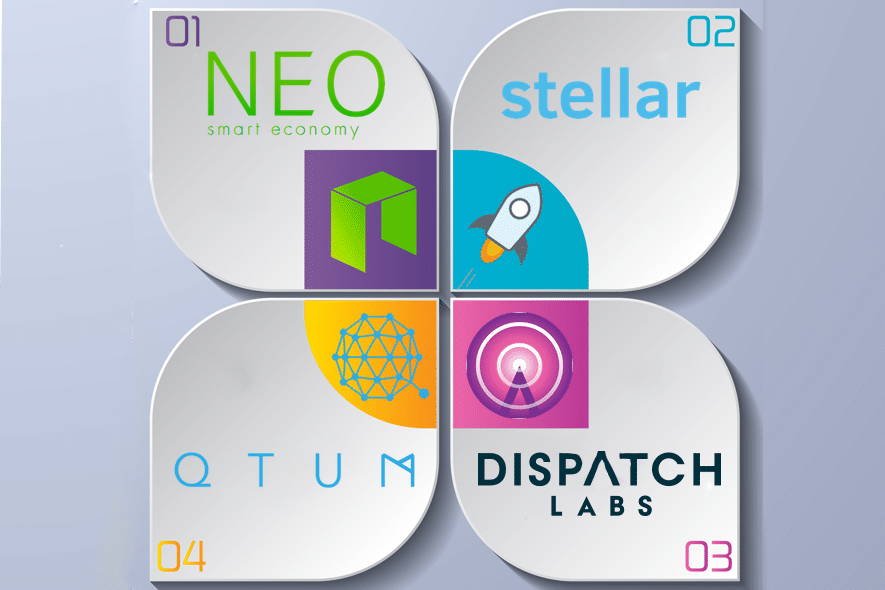If you’re putting together a token sale, you have to launch it on the Ethereum platform… right? New crypto entrepreneurs can be forgiven for thinking this because it seems like Ethereum dominates the ICO world.
On CoinMarketCap’s list of tokens ranked by market capitalization, over 90% of the top 100 entries are built on top of Ethereum. Ethereum’s ERC20 token standard is beloved among developers, because it allows smart contract agreements and interactions between different tokens, as long as they all use the ERC20 standard.
But Ethereum isn’t the only option for launching a token sale. Lately, many entrepreneurs and developers have been looking to other platforms. Ethereum brought new utility to the blockchain world, but its popularity has also highlighted its limitations. After a mere 200,000 users joined the Ethereum Dapp CryptoKitties in late 2017, the entire network drastically slowed down. Ethereum founder Vitalik Buterin has been frank about discussing the network’s scalability issues, telling a blockchain conference that “If you want to build a decentralized Uber and Lyft on top of an unscalable Ethereum, you are screwed. Full stop.”
Unfortunately, many ICOs built on Ethereum fail–and it’s not necessarily Ethereum’s fault. One study found that by early 2018, half of all ICOs launched in 2017 had failed. ICO success depends on many factors, including market need, talent pool, product design, and luck.
But platform choice is still one of many important decisions that token creators need to consider. And they do have options beyond Ethereum that, in some cases, might be a better fit for their product. Here are a few alternative platforms:
NEO uses these components to create a “smart economy” for the secure trading of digital assets. Use cases for NEO Dapps include decentralized exchanges, prediction markets, and smart funds. Prominent existing NEO projects include Ontology, a public blockchain project and distributed trust collaboration platform; DeepBrain Chain, a blockchain-based AI computing platform; and Nex, a high-volume decentralized exchange.
Rather than proof-of-work or proof-of-stake, NEO uses Delegated Byzantine Fault Tolerance, a protocol that relies on elected consensus nodes. NEO’s founder, Da Hongfei, describes NEO as a compliance-oriented platform: a platform that provides a blockchain stepping stone for companies and developers who prefer to stay on regulatory authorities’ good side. Its compliance orientation has also lead to accusations that it’s too centralized, which gives some developers pause.
Stellar is a platform for building blockchain-based payment applications. Its consensus protocol relies on a new model called federated Byzantine agreement, which uses “quorum slices,” or trust decisions by individual nodes, to cohere a system-level quorum. Companies such as Mobius, who choose Stellar over Ethereum, cite Stellar’s ability to handle high-volume transactions at a rapid pace with minimal fees as the reason why. Those are two significant obstacles to building high-volume financial applications on Ethereum.
Stellar’s proposed use cases for Dapps include Slack bots, quorum monitors, micro-savings accounts, and multi-signature transaction coordinators. Prominent Stellar Dapps (other than Mobius) include Ternio, a blockchain advertising framework; Smartlands, a platform for tokenizing real-world assets; and SureRemit, a remittance payment tool.
A full public release of the Dispatch platform is slated for late 2018. But interested parties can get a sneak peak on the company’s test network, which allows trading of test tokens and smart contracts at http://scandis.dispatchlabs.io
Dispatch is building scalability into its ecosystem on two fronts: its consensus protocol and its off-chain storage. The off-chain Dispatch Artifact Network (DAN) will run in parallel with the Dispatch blockchain. Uploaders seed the DAN with artifacts that are sealed with cryptographic hashes, ensuring that the only way to open them is through on-chain activities. Because the blockchain itself only processes transaction and access history rather than the data object itself, Dispatch’s blockchain is lean and scalable. Their blockchain uses a unique delegated asynchronous proof-of-stake consensus mechanism (DAPoS), which ensures it stays scalable even with large transaction volumes.
Dispatch developers will be able to build Dapps in the Dispatch Virtual Machine similar to how Ethereum developers can create in the Ethereum Virtual Machine. Current contracts written for EVM will also be compatible with the Dispatch Virtual Machine.
Because data artifacts are stored off-chain, Dispatch is a particularly appropriate platform for tokens used in high-volume or confidential applications, such as medical record storage and video content distribution.
Qtum focuses on providing corporate-ready smart contracts. Like NEO, Qtum believes legacy organizations want to get involved with blockchain technologies, but Ethereum and Bitcoin alone aren’t stable or usable enough for mainstream adoption. Qtum is particularly notable because its smart contracts and Dapps can be created, deployed, and altered on light nodes that don’t contain a complete copy of the blockchain network.
Prominent Qtum projects include Ink, an IP token platform; Medibloc, a decentralized healthcare information system; and Qbao, a social platform with a smart crypto wallet.
Ethereum’s upcoming transition to proof-of-stake and its experimentation with sharding solutions shows that it’s not ready to give up its potential as an ICO platform just yet. All the same, developers should take time to consider the wide variety of options they have available for token sales.

